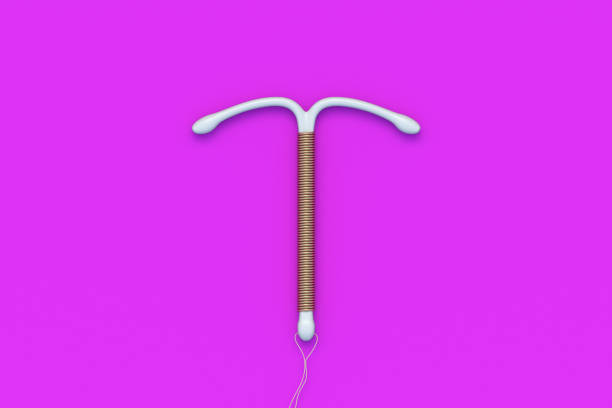When considering contraceptive methods, many women turn to intrauterine devices (IUDs), and among these, the Copper T is a popular choice. The Copper T in Abu Dhabi is widely used due to its effectiveness and long-term contraception benefits. This small, T-shaped device is inserted into the uterus and releases copper ions, which create an environment hostile to sperm, thus preventing fertilization. It is a non-hormonal method, making it appealing to women who prefer to avoid hormonal side effects. However, like any medical device, the Copper T can influence the body’s natural processes, including menstrual cycles.
How Copper T Works in the Body
The Role of Copper in Contraception
Copper, when used in an IUD, acts as a spermicide. It causes an inflammatory response in the uterus that impairs sperm motility and viability. This prevents sperm from reaching and fertilizing an egg. The device’s design ensures a steady release of copper, maintaining its contraceptive effectiveness for several years. The Copper T can be inserted at any time during the menstrual cycle, usually shortly after menstruation begins.
Impact on Menstrual Cycles
Since the Copper T works locally within the uterus, it can influence menstrual patterns. Many women notice changes in their periods after insertion. These changes are often temporary but can sometimes persist, leading to concerns about irregular periods or menstrual discomfort. Understanding how the Copper T interacts with the menstrual cycle helps in managing expectations and identifying normal versus abnormal changes.
Can Copper T in Abu Dhabi Cause Irregular Periods?
Common Menstrual Changes Post-Insertion
Women often experience some alterations in their menstrual cycle after the Copper T is inserted. These changes may include:
- Heavier menstrual bleeding
- Longer duration of periods
- More cramping and menstrual pain
- Spotting or irregular bleeding between periods
These symptoms are generally most prominent during the first few months following insertion. The body typically adjusts over time, and the menstrual pattern may stabilize. However, some women continue to experience irregularities, which can sometimes warrant further attention.
Why Does Irregular Bleeding Occur?
The presence of the Copper T causes a localized inflammatory reaction in the uterus, which can affect the endometrial lining. This reaction often results in increased blood flow and thickening of the lining, leading to heavier bleeding. Additionally, the copper’s spermicidal properties cause the uterus to contract more frequently, which can induce cramping and irregular bleeding patterns.
When to Be Concerned
While occasional irregularities are normal, persistent or very heavy bleeding, or severe cramps, should be evaluated. It’s important for women to monitor their menstrual patterns and seek medical advice if they experience:
- Excessively heavy bleeding that soaks through a pad or tampon quickly
- Bleeding lasting longer than usual
- Severe or worsening cramps
- Bleeding between periods that does not subside
Understanding these signs helps women distinguish between normal post-insertion changes and potential issues requiring medical attention.
Do Cramps Increase With Copper T?
Nature of Menstrual Cramps Post-Insertion
Many women report increased menstrual cramps after the Copper T is inserted. This is often due to the uterine response to the foreign object and the copper’s local effects. The cramps are usually most intense during the initial months and tend to decrease over time as the body adapts.
Managing Menstrual Cramps
While cramps can be uncomfortable, several strategies can help ease discomfort. Applying heat to the lower abdomen, practicing gentle exercise, or using over-the-counter pain relief (as advised) can provide relief. Maintaining a healthy lifestyle and staying hydrated may also contribute to lessening menstrual discomfort.
Benefits and Considerations of Copper T as a Contraceptive
Advantages of Using Copper T
The Copper T offers several benefits that make it a favored contraceptive option. It provides long-term protection, often lasting up to ten years, and does not contain hormones, which is suitable for women sensitive to hormonal changes. It is also cost-effective over time, and its reversibility allows women to conceive after removal.
Factors to Consider
Despite its advantages, women should consider potential changes in menstrual patterns and discuss these with healthcare providers. It is essential to have regular check-ups to ensure the device remains properly positioned and to address any concerns promptly.
How to Manage Irregular Periods or Cramps Caused by Copper T
Monitoring and Tracking Menstrual Changes
Keeping a menstrual diary helps women observe patterns and identify any persistent irregularities. This information can be helpful during medical consultations to determine if the changes are within normal limits or if further intervention is needed.
Lifestyle Adjustments
Adopting a healthy diet rich in iron can help compensate for increased blood loss. Regular moderate exercise can improve overall well-being and reduce menstrual discomfort. Stress management techniques like relaxation exercises or yoga may also help alleviate cramps.
When to Seek Medical Advice
Women should consult healthcare providers if they experience severe or persistent irregularities, heavy bleeding, or intense cramps. A healthcare professional can assess whether the Copper T remains correctly placed or if other underlying conditions might be contributing to the symptoms.
Frequently Asked Questions
Does the Copper T always cause irregular periods?
Not all women experience irregular periods after getting a Copper T. While some changes are common, many women find their menstrual cycle stabilizes over time. Persistent irregularities should be discussed with a healthcare provider.
Are heavier periods normal with Copper T?
Heavier menstrual bleeding is a common side effect but varies among women. If bleeding becomes excessively heavy or causes anemia symptoms, medical advice should be sought.
Can I still get pregnant after discontinuing the Copper T?
Yes, fertility typically returns quickly after removal of the Copper T. Women interested in pregnancy should discuss the timing with their healthcare provider post-removal.
How long do menstrual changes last after insertion?
Most women notice the most significant changes within the first few months. Over time, many find their periods return to a more regular pattern, although some may experience ongoing irregularities.
Is it possible to prevent cramps caused by Copper T?
While some level of cramping may be unavoidable initially, managing pain with lifestyle strategies and, if necessary, over-the-counter remedies can help. Consulting with a healthcare provider can also provide personalized management options.
Final Thoughts
The Copper T remains a highly effective and popular contraceptive option for women seeking long-term, hormone-free birth control. While it can cause changes in menstrual patterns, these are generally manageable and tend to improve with time. Women considering the Copper T should be aware of the potential for irregular periods and cramps, monitor their symptoms, and seek medical advice if needed. Open communication with healthcare providers ensures that women can make informed decisions about their reproductive health and enjoy peace of mind regarding their contraceptive choices.
READ MORE : What to Expect During Copper T Insertion Procedure?



